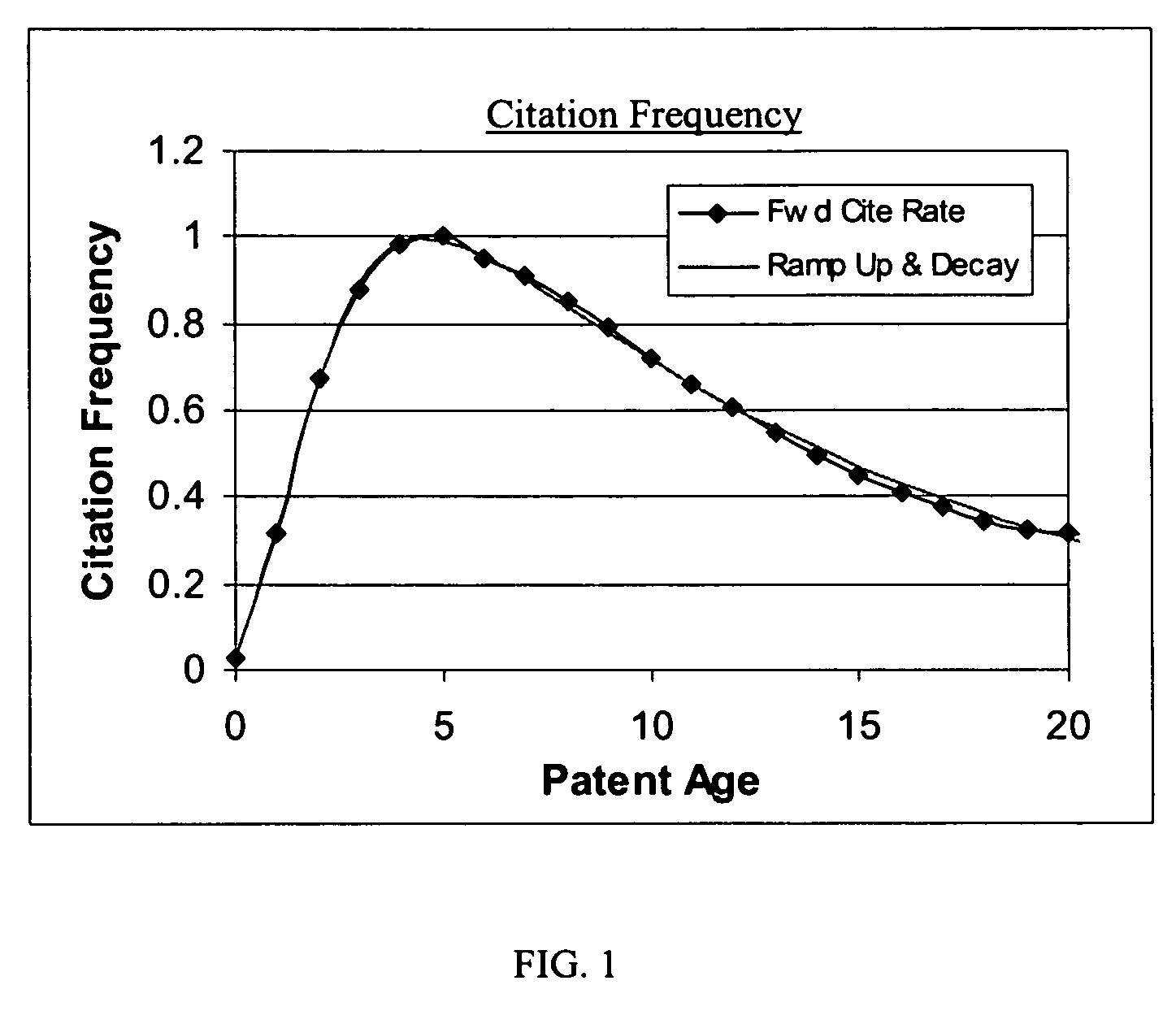Method of determining an obsolescence rate of a technology
a technology and obsolescence rate technology, applied in the field of assessing the value of assets, can solve the problems of high difficulty in accurately valuing patents and other intangible intellectual property assets, additional fees and costs typically incurred for related professional services, and thousands of infringement suits brought by patent owners
- Summary
- Abstract
- Description
- Claims
- Application Information
AI Technical Summary
Benefits of technology
Problems solved by technology
Method used
Image
Examples
Embodiment Construction
In valuing a patent asset, a time-wise adjustment needs to be made in order to account for the effects of value depreciation over time. Depreciation of patent value over time may be caused by: (i) depletion of remaining patent term; and (ii) obsolescence over time of the underlying patented technology. A discussion on the valuation of patents can be found in U.S. Pat. No. 6,556,992, which is hereby incorporated herein by reference.
Term depletion depreciation accounts for loss of patent value due to exhausting the useful life of the patent. Every patent has a finite maximum term, averaging about 17.3 years. Depletion of patent term results in corresponding depletion of value because there is less time to extract the economic benefits of the patent and the underlying technology. This can generally be approximated as a straight line depreciation function over the expected patent term.
In addition to term depletion there is also loss of value due to age-related obsolescence of the underl...
PUM
 Login to View More
Login to View More Abstract
Description
Claims
Application Information
 Login to View More
Login to View More - R&D
- Intellectual Property
- Life Sciences
- Materials
- Tech Scout
- Unparalleled Data Quality
- Higher Quality Content
- 60% Fewer Hallucinations
Browse by: Latest US Patents, China's latest patents, Technical Efficacy Thesaurus, Application Domain, Technology Topic, Popular Technical Reports.
© 2025 PatSnap. All rights reserved.Legal|Privacy policy|Modern Slavery Act Transparency Statement|Sitemap|About US| Contact US: help@patsnap.com



